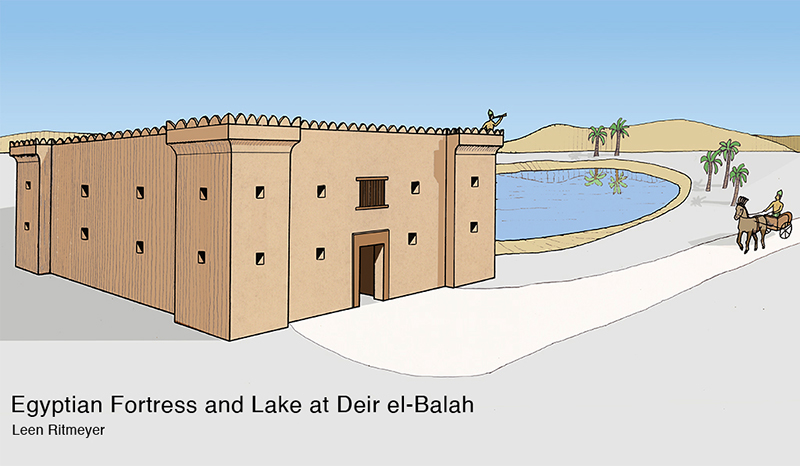The war that Israel is waging against the Hamas terrorist organisation in the Gaza Strip has resulted in casualties of many innocent civilians on both sides of the conflict. We hope that this deplorable situation will end soon.
We do believe, however, that eventually there will be peace in the Middle East when the rod from the stem of Jesse shall come forth and a branch shall grow out of its roots and the Spirit of Yahweh shall rest upon the greater son of David, namely Jesus who shall judge the poor with righteousness as Isaiah says in Ch. 11.
Isaiah 11:11 “It shall come to pass in that day that the Lord shall set His hand again the second time to recover the remnant of His people who are left, from Assyria and Egypt, from Pathros and Cush, from Elam and Shinar, from Hamath and the islands of the sea.” And then Isaiah 11:16 “There will be a highway for the remnant of His people who will be left from Assyria, as it was for Israel in the day that he came up from the land of Egypt.”
At present it is impossible to imagine that there will be a highway from Assyria to Egypt, from Baghdad to Cairo, but in the Kingdom of God, these things will come to pass. That means that the international coastal highway between Africa and Mesopotamia, which is the topic of this blog, will be opened again.
But back to the present. The Gaza Strip has been off bounds to Israelis since they evacuated the area in 2005. The situation was different when after the 1967 Six Day War, I worked as a volunteer in Kibbutz Yad Mordechai, which is near the northern border of the Gaza Strip.
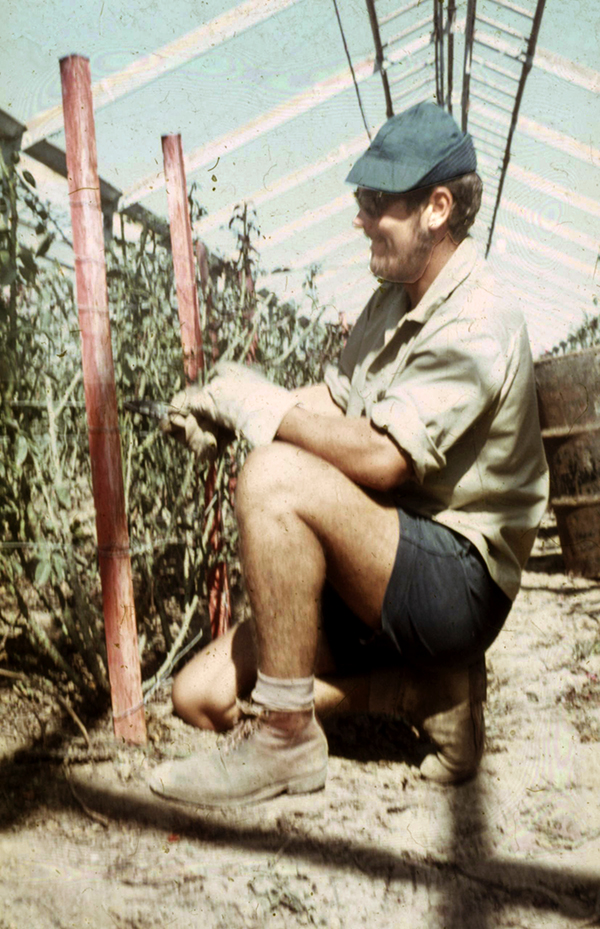
There were no border controls at that time, and it took me less than an hour to walk to the centre of Gaza. Soon afterward, however, the entire Gaza Strip became off-limits to civilians.
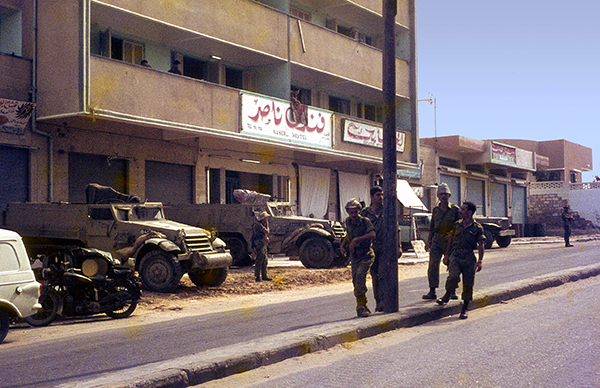
The Gaza Strip is rich in archaeological remains. The reason for this is that the great international coastal highway between Africa and Asia ran through this area. This great trunk road connected Egypt in the south with Syria and Mesopotamia in the north. It is one of the oldest roads in the world and is called the Way of Horus by the ancient Egyptians, and in the Bible, it is known as the Way of the Land of the Philistines (Ex. 13:17).
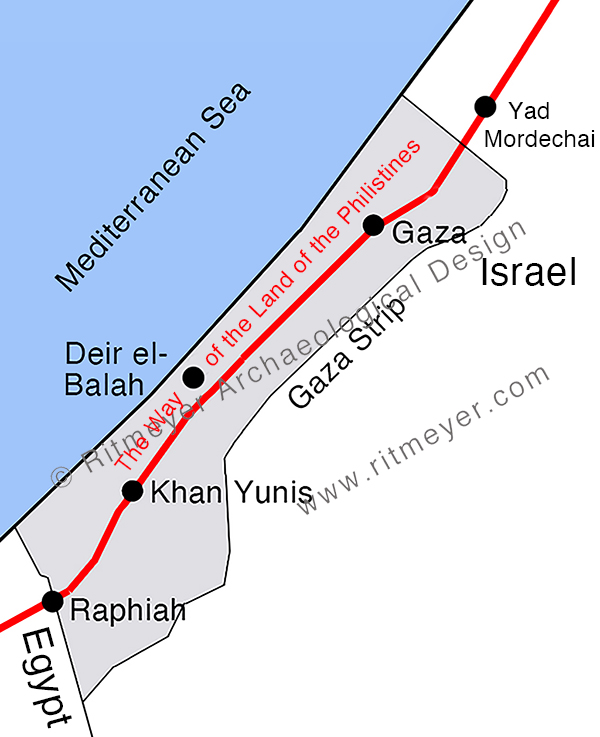
Numerous towns, fortresses and caravanserais were built along this road that runs a few miles inland due to the wide strip of sand dunes that lines the Mediterranean coast. Ancient armies, traders, caravans, and travellers moved along this road. Many biblical characters, such as Joseph, Jacob, and infant Jesus with Mary and Joseph, travelled along this road too.
When the Israelites under leadership of Moses left Egypt, they were warned in Ex. 13:17 not to follow the “Way of the Land of the Philistines”, lest the people “change their minds when they see war and return to Egypt.” Archaeological discoveries have shown that they would have had to fight the Egyptian garrisons that were guarding this route. This road, known to the Egyptians as the “Way of Horus”, was the military road between Egypt and Land of Canaan as it was called then. Gaza was the capital of Canaan in the time of the New Kingdom in Egypt (1550–1077 BCE). This road appears in graphic form on the northern wall of the hypostyle hall at Karnak. It shows that strong fortifications were built along this road, a fact that has been verified by archaeological excavations. Prof. James Hoffmeier excavated the Migdol fortress in Egypt that was built at the beginning of this road, and I was involved in the excavations of one of the more northern fortresses, namely at Deir el-Balah in the Gaza Strip. This road was fortified by Seti I (1294-1279 BCE) and continued in use until the middle of the reign of Ramses II (1279-1213 BCE). The fact that the Israelites were told to avoid this road is a point in favour for the late date of the Exodus.
Places that we hear of in the news, such as Rafah (ancient Raphiah), Khan Yunis and Gaza are located on this ancient road. Ten years after my first visit to Gaza, I joined an archaeological tour and visited Gaza, Tel Katifa, Deir el-Balah, and Khan Yunis.
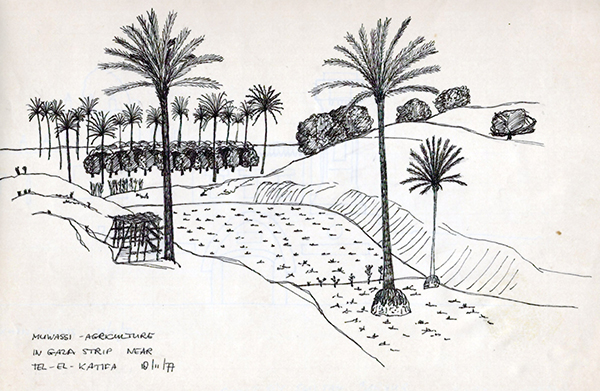
We were impressed by the muwassi hydroponic agriculture that we saw near Tel Katifa. The land in this area sits on an aquifer of sweet water. Bulldozers had been used to remove the sand dunes down to the original soil. As the sweet water floats to the surface above the heavier sea water, a fertile area was created where vegetables and other crops could be grown.
We then travelled south to Khan Yunis where I made a quick sketch of the Barquq caravanserai.
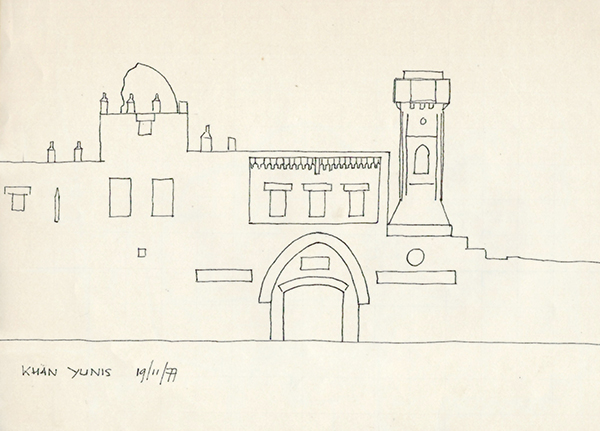
I was pleasantly surprised to see in a recent blog post by Brandon Marlon for the Times of Israel that the building still exists today.
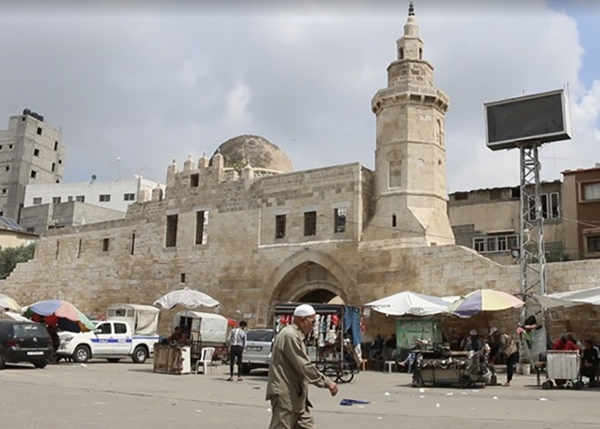
On our way back, we visited the excavations of Deir el-Balah. Prof. Trude Dothan of the Hebrew University carried out excavations of the site between 1972 and 1982. Remains of clay coffins were found and kilns in which anthropoid lids were fired. Additionally, the remains of a large fortress that measured 20m (66 feet) square were found and an adjacent lake or reservoir.
One year before the end of the excavations, in 1981, Trude asked me to make reconstruction drawings of the site for her final publication. These were later used by artist Lloyd Townsend of the National Geographic to illustrate Trude’s article “Gaza Sands Yield Lost Outpost of the Egyptian Empire” in the 1982 December issue. I recently digitised these drawings and colored them in.

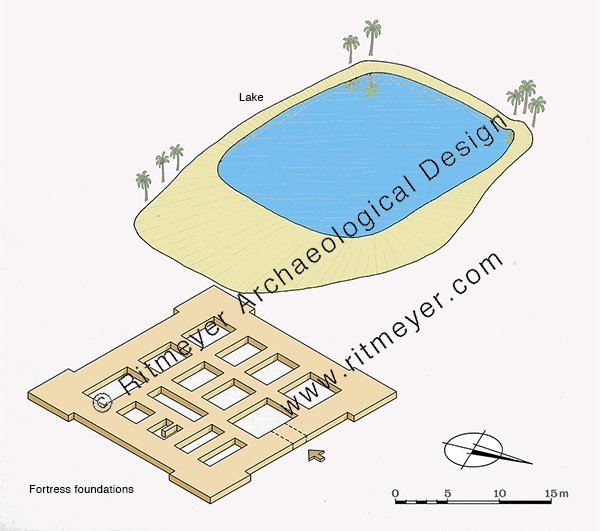
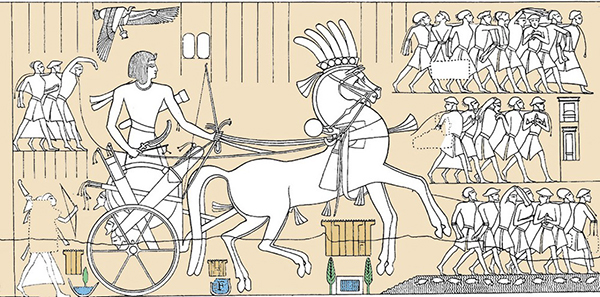
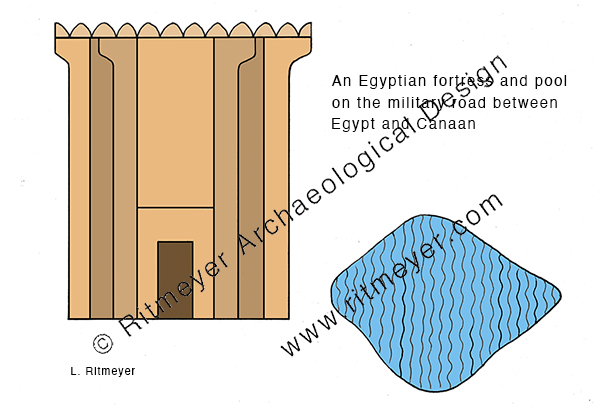
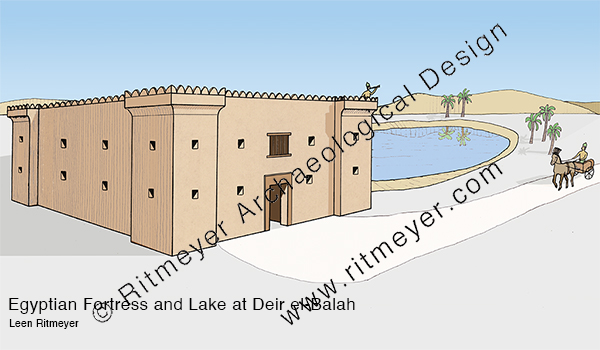
In 1967, Trude Dothan saw many clay lids of anthropoid coffins that appeared in the antiquities shops in the Old City of Jerusalem. She noticed that fine grains of sand were embedded in the clay. This gave her the idea that they may have originated from the Gaza Strip or the Sinai desert. This was confirmed by Moshe Dayan who was defense minister at the time. Eventually she was allowed to conduct archaeological excavations at this site.
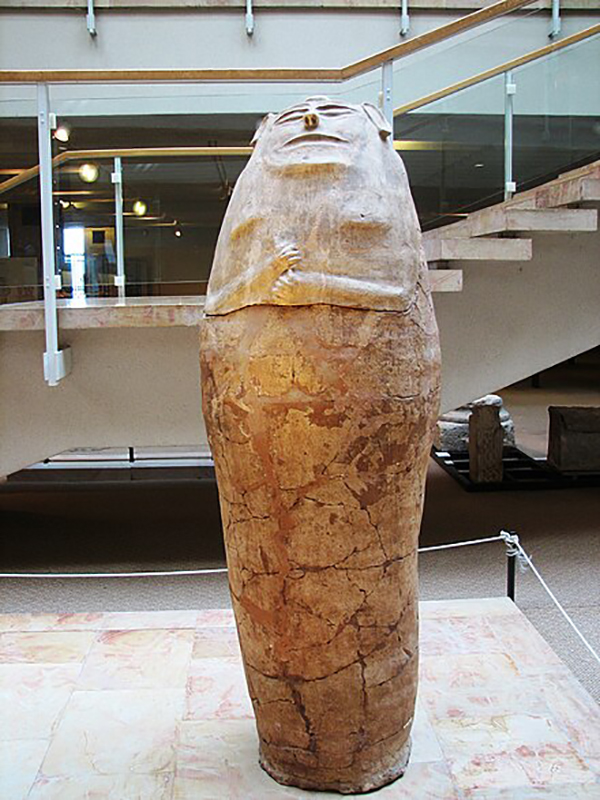
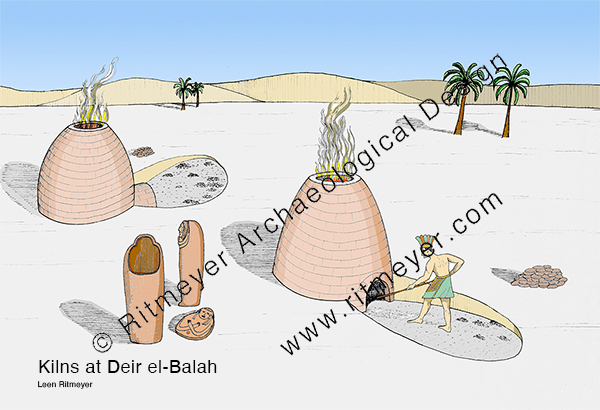
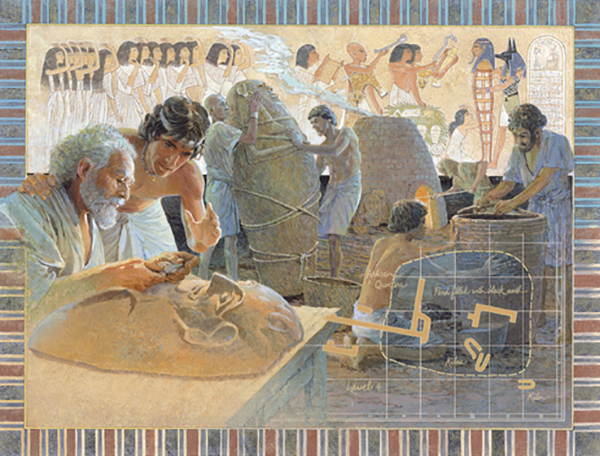
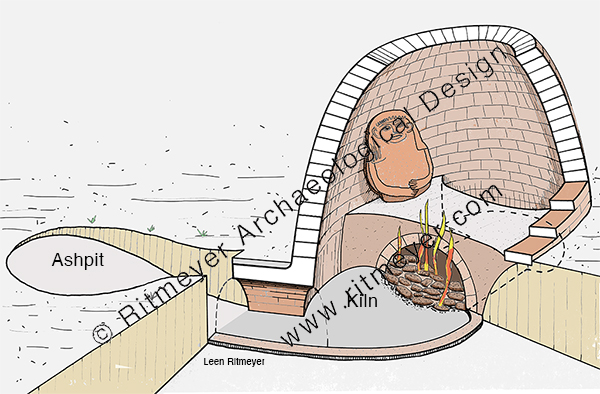
the arch dung patties were placed for firing. The ash pit in front of the kiln was used to extract the ashes after the process of firing was finished. © Leen Ritmeyer
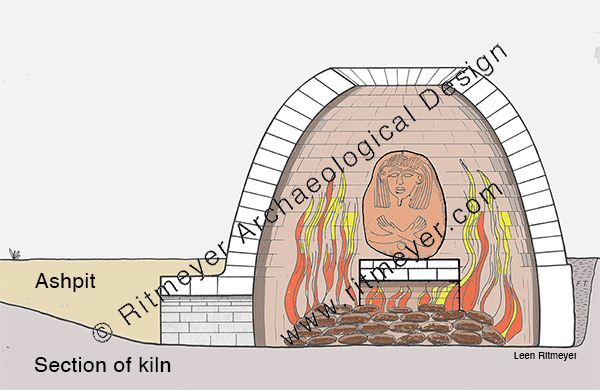
We hope that the present suffering will end soon, and that the “times of refreshing may come from the presence of the Lord, and that he may send the Christ appointed for you, Jesus, whom heaven must receive until the time for restoring all the things about which God spoke by the mouth of his holy prophets long ago.” (Acts 3:20,21).

